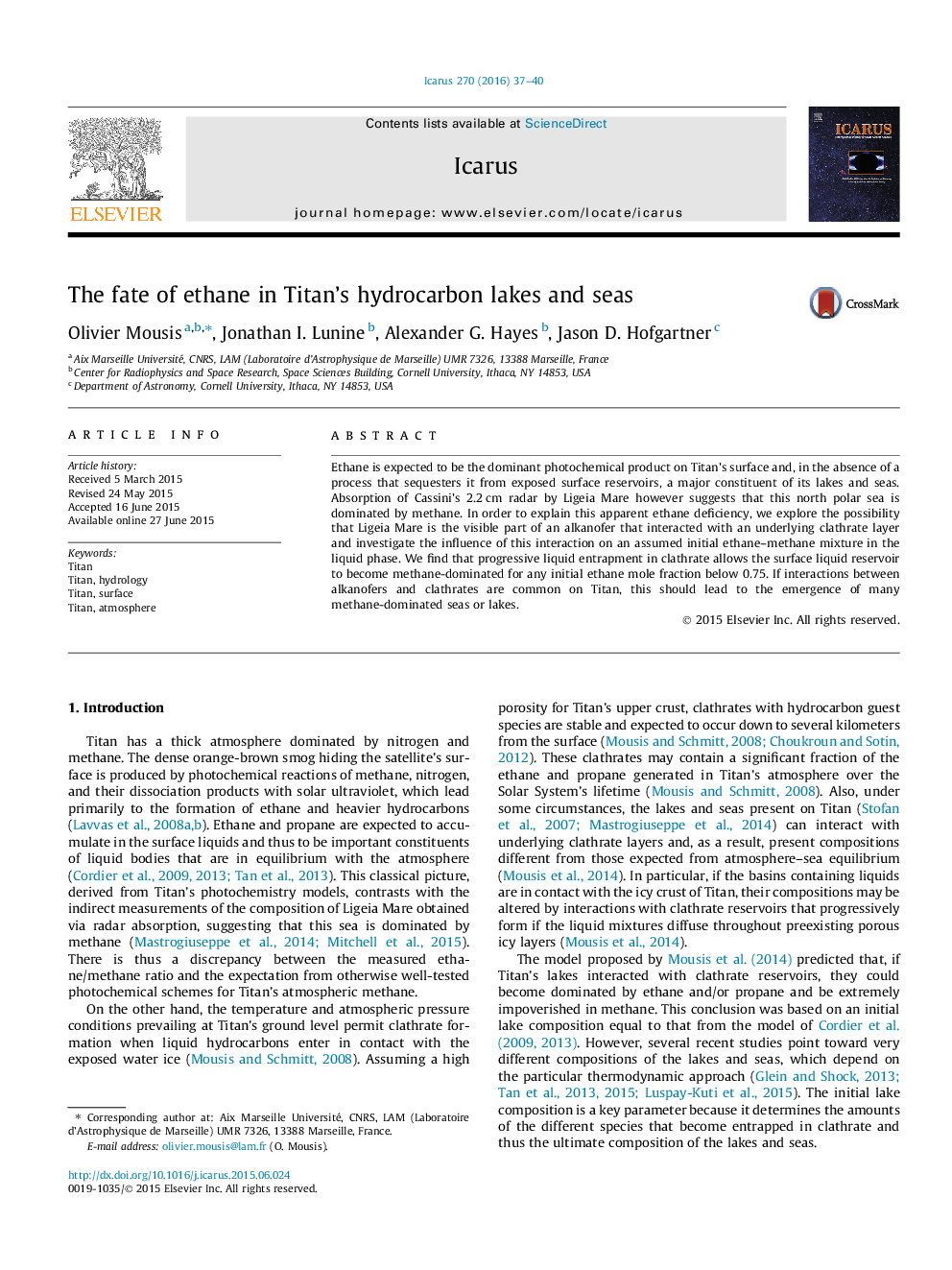| کد مقاله | کد نشریه | سال انتشار | مقاله انگلیسی | نسخه تمام متن |
|---|---|---|---|---|
| 1772926 | 1523520 | 2016 | 4 صفحه PDF | دانلود رایگان |
• We explain the origin of the ethane deficiency in Ligeia Mare on Titan.
• We propose that Ligeia Mare is part of an alkanofer that interacted with a clathrate layer.
• The progressive liquid trapping in clathrate allows the alkanofer to become methane-dominated.
• The ethane deficiency on Titan could be due to the alkanofer–clathrate exchange mechanism.
Ethane is expected to be the dominant photochemical product on Titan’s surface and, in the absence of a process that sequesters it from exposed surface reservoirs, a major constituent of its lakes and seas. Absorption of Cassini’s 2.2 cm radar by Ligeia Mare however suggests that this north polar sea is dominated by methane. In order to explain this apparent ethane deficiency, we explore the possibility that Ligeia Mare is the visible part of an alkanofer that interacted with an underlying clathrate layer and investigate the influence of this interaction on an assumed initial ethane–methane mixture in the liquid phase. We find that progressive liquid entrapment in clathrate allows the surface liquid reservoir to become methane-dominated for any initial ethane mole fraction below 0.75. If interactions between alkanofers and clathrates are common on Titan, this should lead to the emergence of many methane-dominated seas or lakes.
Journal: Icarus - Volume 270, 15 May 2016, Pages 37–40
